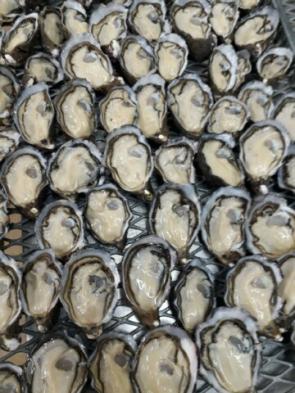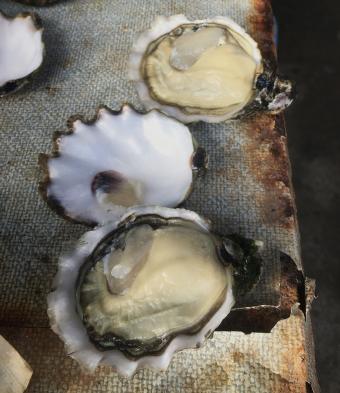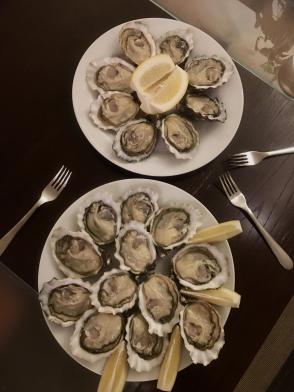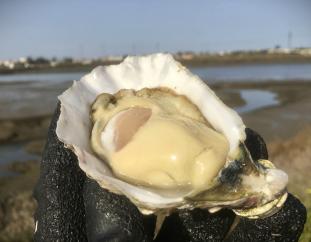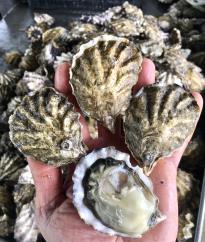How it works
Seed Preparation
With TOPS Oysters™, the initial emphasis is on growing quality spat. Investment in a good oyster "childhood" pays off, because from spat stage until harvest, there is no more product handling needed. No more grading, biomass adjustment, or fouling control measures are involved, thanks to the optimal spacing provided by TOPS Oysters™ at the point of gluing. It is recommended to glue quality seed which is uniform and hardened, with an approximate 25-30 mm shell length. TOPS Oysters™ can be used with a variety of species, such as Pacific oysters, Flat oysters, Portuguese oysters etc.
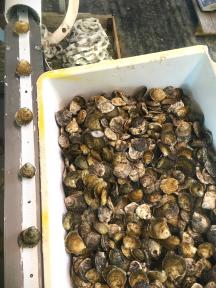
Gluing Mechanization
The TOPS Oysters™ tagging machine is used to continuously glue spat onto tags, which are attached to a high strength tape, and then covered with a biodegradable socking. The socking prevents tangling and allows the seeded tape to be used as continuous rope, before disintegrating after two weeks submergence.
The machine has the capacity to glue up to 25,000 oysters per day with two staff which is fully adequate for commercial production. This capacity can be further expanded, if required. During mechanized seeding, TOPS Oysters™ spat can be attached to the tags in random directions. Thanks to the “loose” attachment feature of the spat and tag to the tape, oysters can freely move around the axis of the pin, and self-orientate during grow-out. So irrespective of their original position at the time of gluing, oysters will all end up pointing in the same direction during grow-out. This is an important feature of the TOPS Oysters™ technology as efficiently spaced oysters that do not touch each other grow better meats and shells. Depending on the grow-out operation, the machine can be used to glue oysters to tags on either one or both sides of the tape.
Drying
After gluing, the seeded tape is held in a suitable cupboard or room for drying overnight, to allow the adhesive to harden before handling. The seeded tape is placed on trays in the drying area in 100 - 150 m long sections, which are rejoined into a continuous rope during farm deployment. After adhesive hardening, seeded tape can either be directly hung out onto the marine farm or temporarily held in open baskets (with a bungee on top) in some nearby holding area for up to one week before deployment on farm.
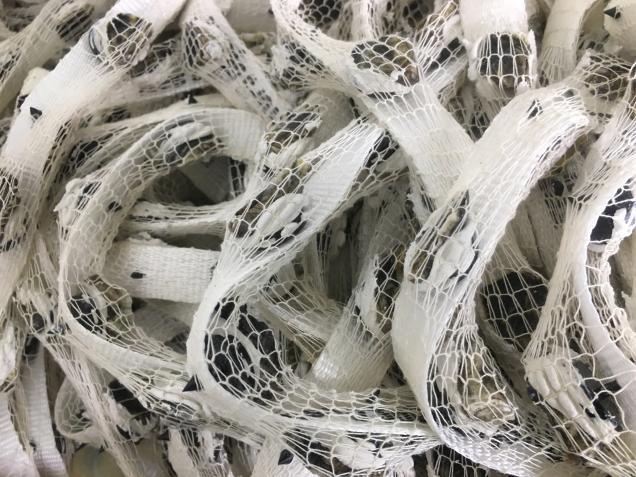
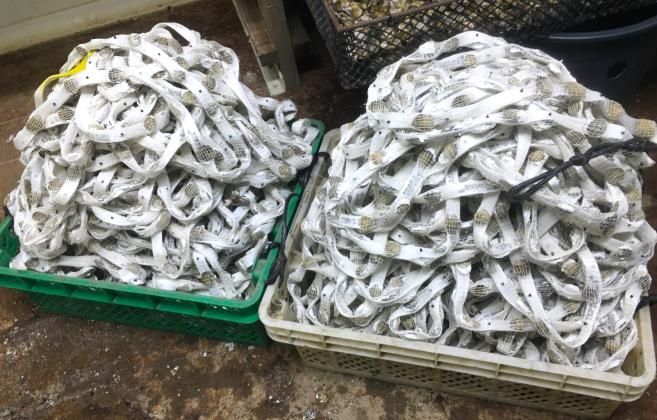
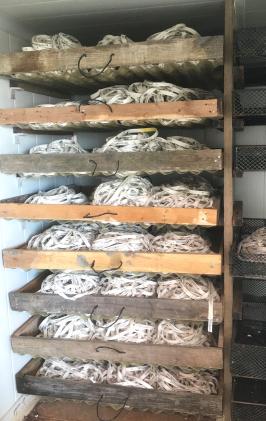
Seeding - Subtidal
TOPS Oysters™ is best suited for subtidal waters, which allows efficient mechanized seeding of continuous tape onto single or double backbone longlines, with the use of a 12V or hydraulic seeding wheel and walking wheels. Depending on the site characteristics, different longline designs and orientations can be implemented, to allow use in a variety of environments. Longline dropper depth and spacing can be adjusted depending on the site productivity to allow full use of the productive water column.
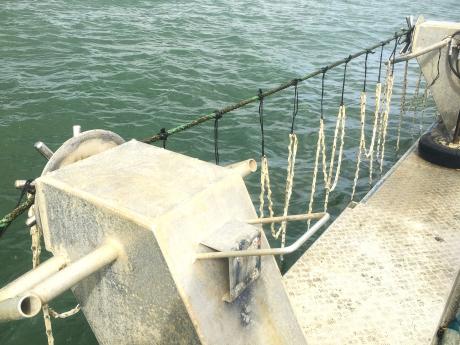
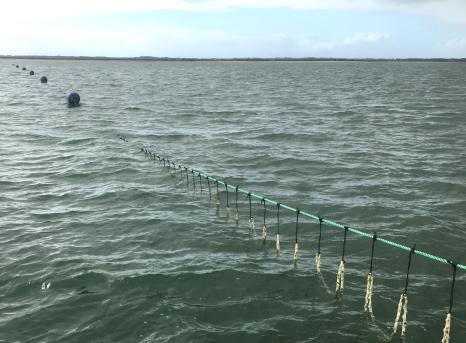
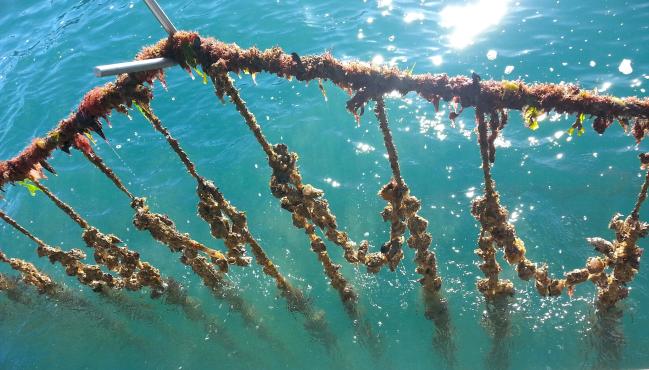
Seeding - Intertidal
TOPS Oysters™ can also be used in lower energy intertidal environments by laying seeded tape across the top of bars, suspended off-bottom.
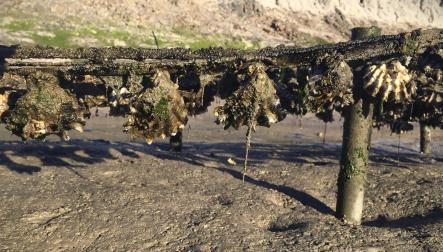
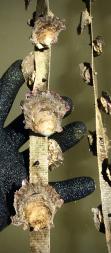
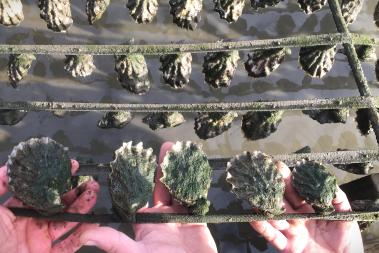
Mechanized Harvest
As inter-oyster spacing is based on the desired final harvest size, no grading or biomass adjustment is required during grow-out. As oysters are grown freely suspended outside the confines of cages, individual oysters enjoy unrestricted water exchange and access to food without the need for biofouling control during grow-out. For the harvesting of oysters, a drum hauler can be used to pull continuous tape up an infeed chute to then part the oysters off the tape, by cutting off the pin that attaches the oyster and tag to the tape. Oysters can then be passed through an ANSCO brush cleaner or similar machine to efficiently remove any biofouling, as needed.
Sale
Following harvest, oysters can be either sold directly, or stocked in floating or intertidal basket systems for 2-3 weeks for further cleaning and hardening of oysters before sale. Depending on the target market and grower’s intent, the tag can either be removed from the oyster or left on the shell to provide a label for traceability and branding purposes.
